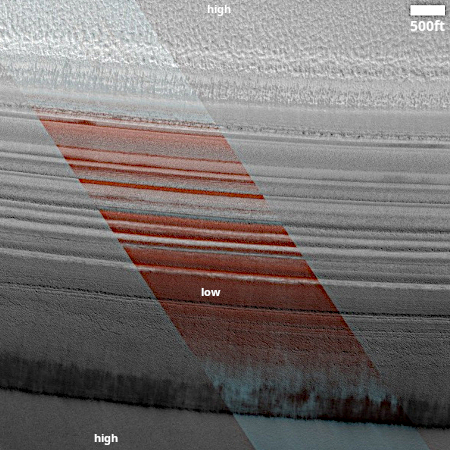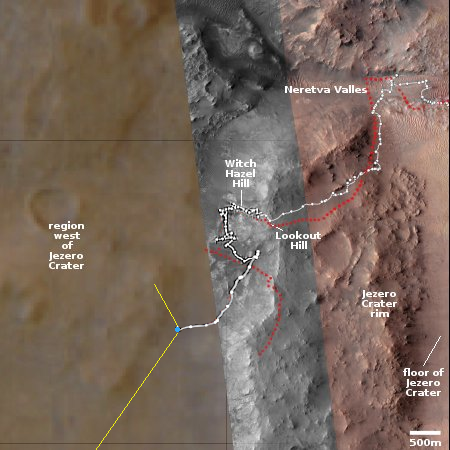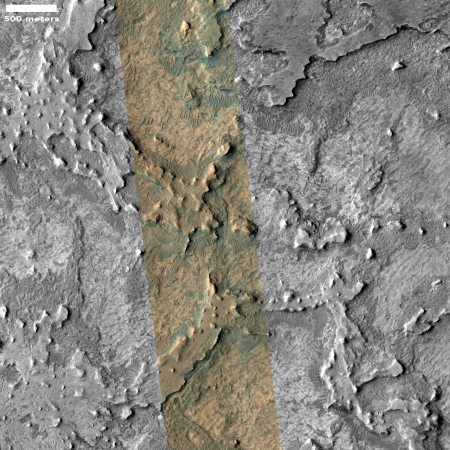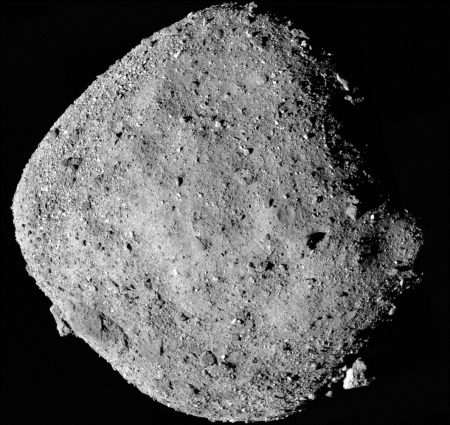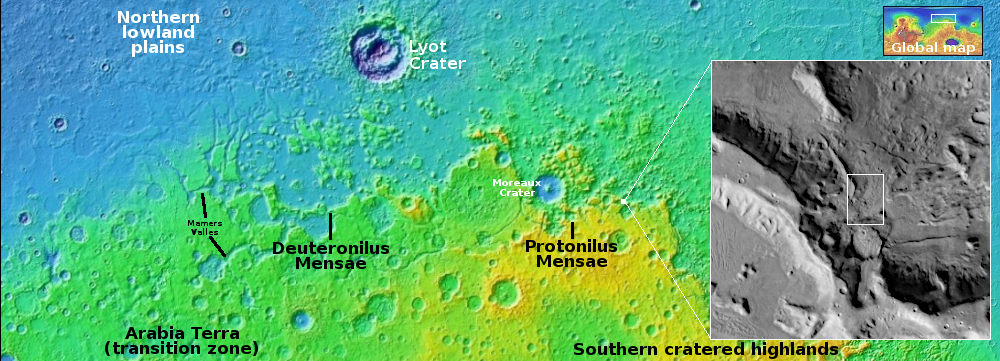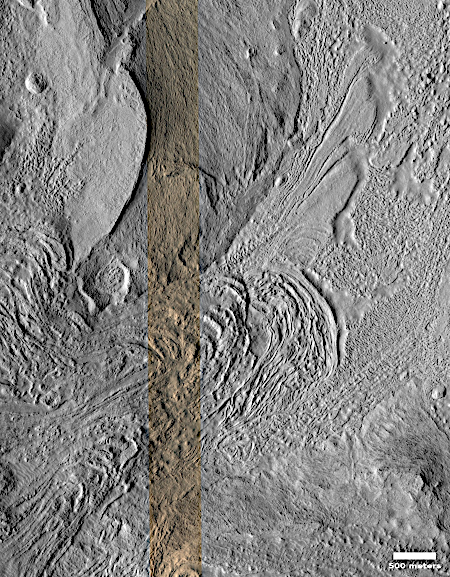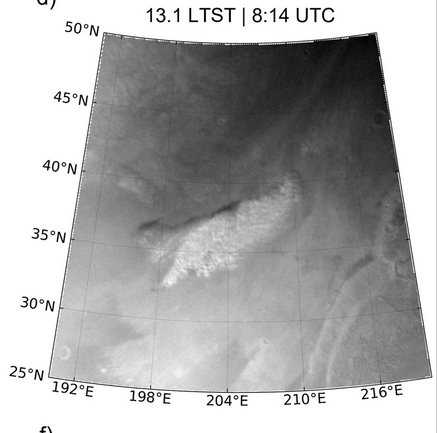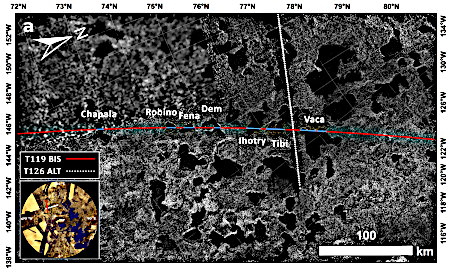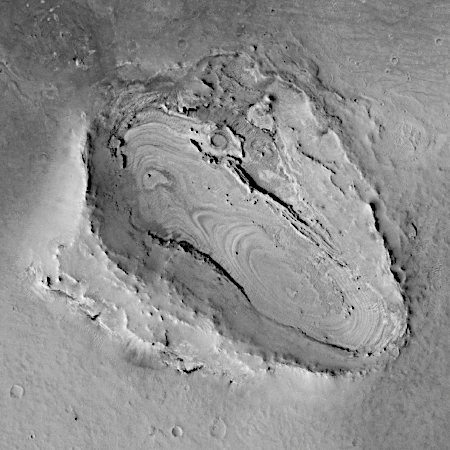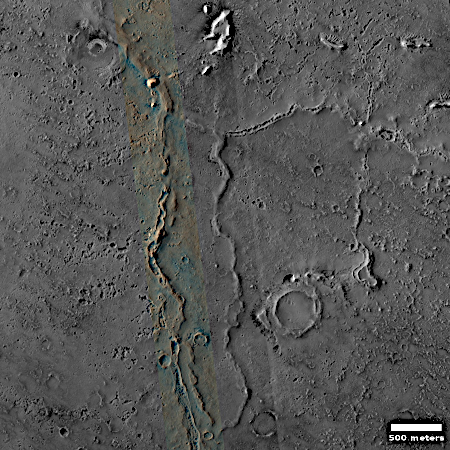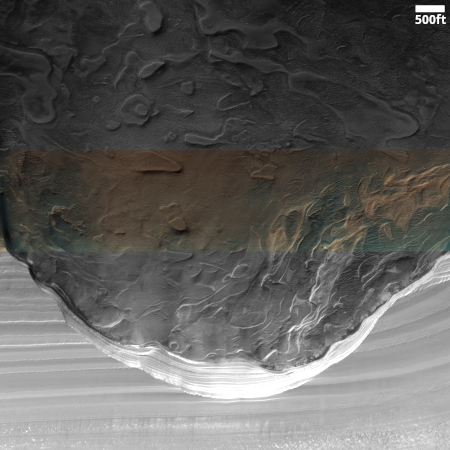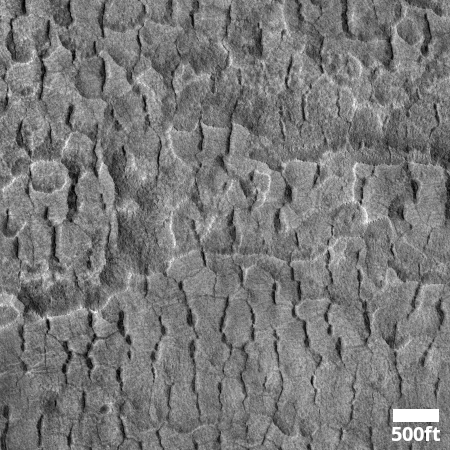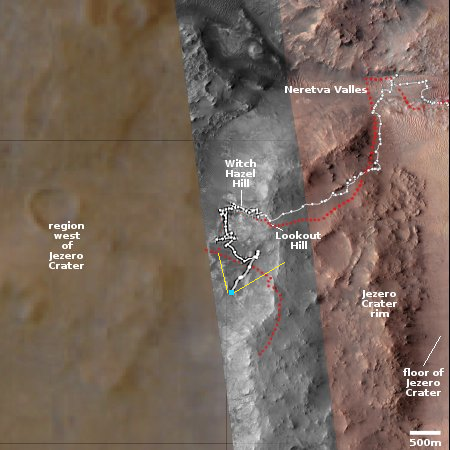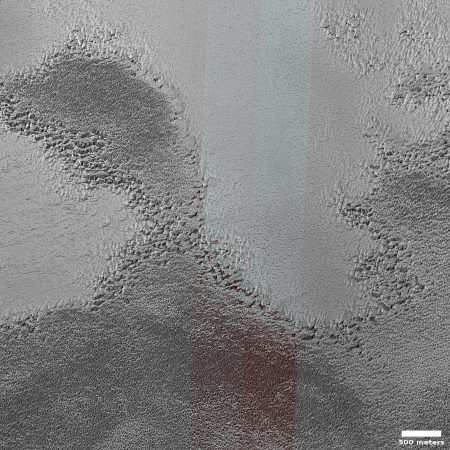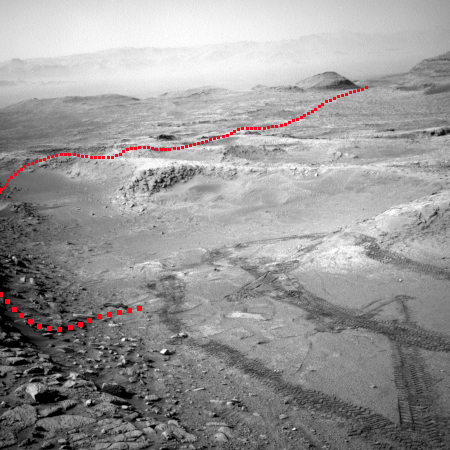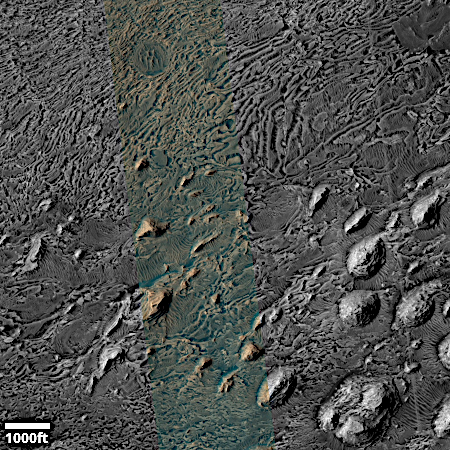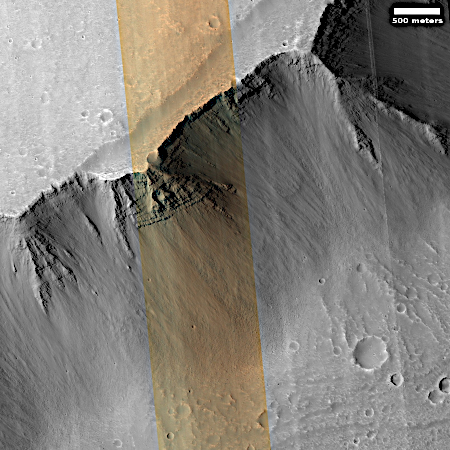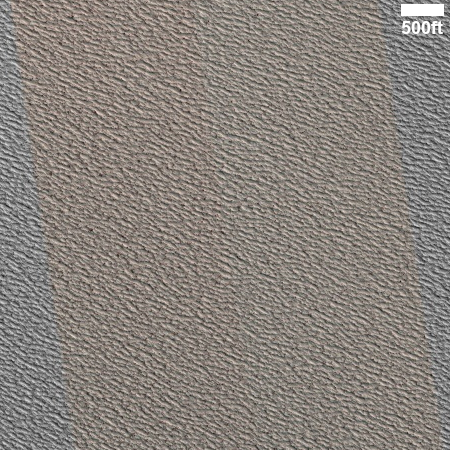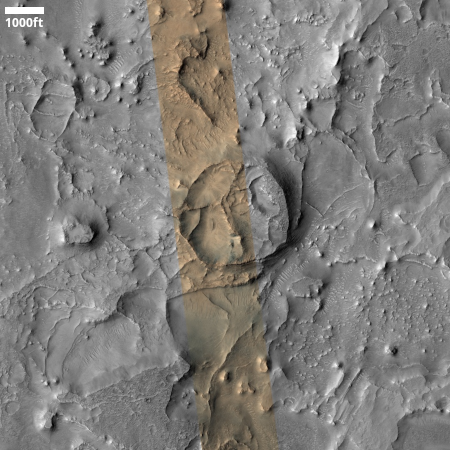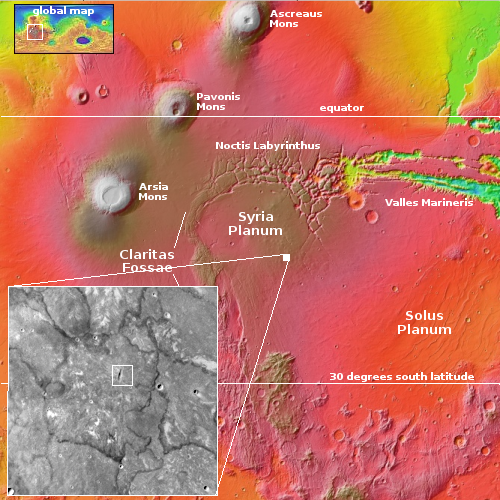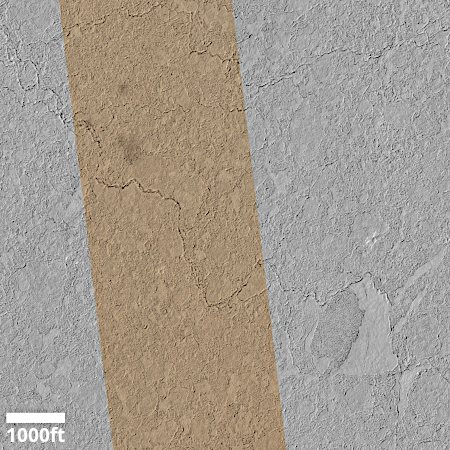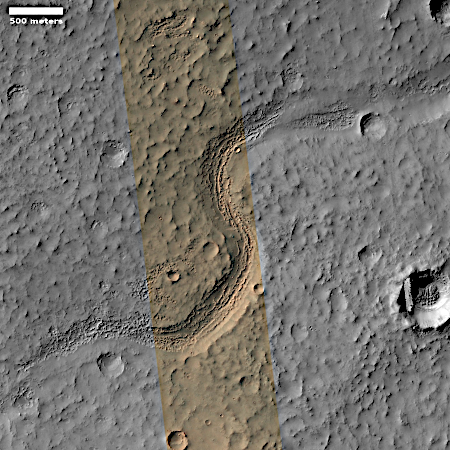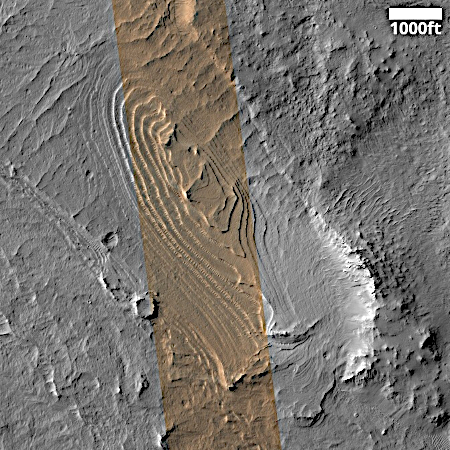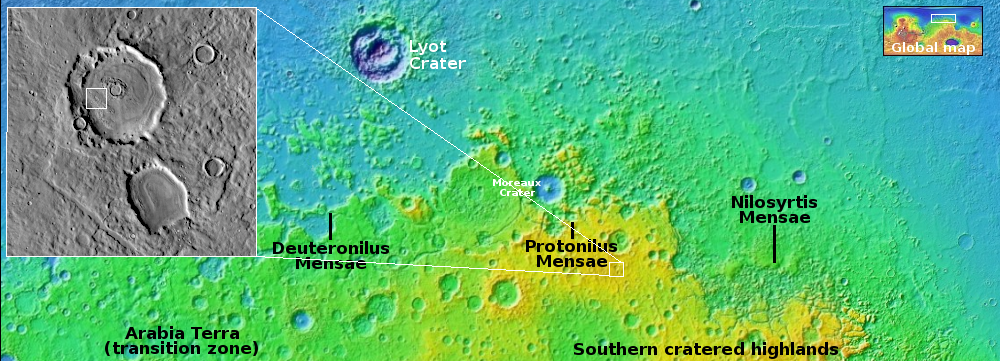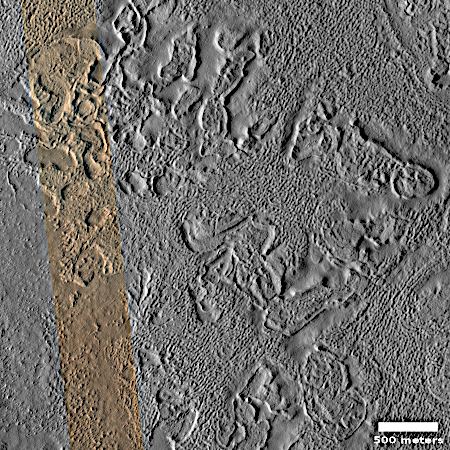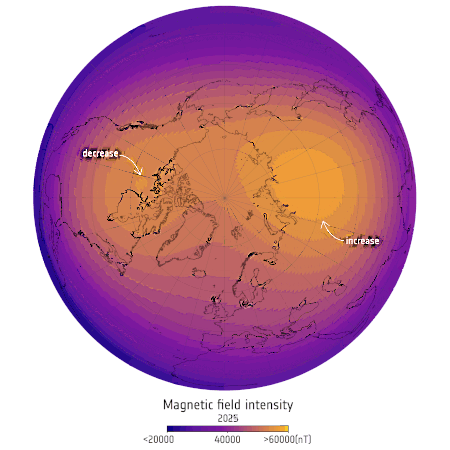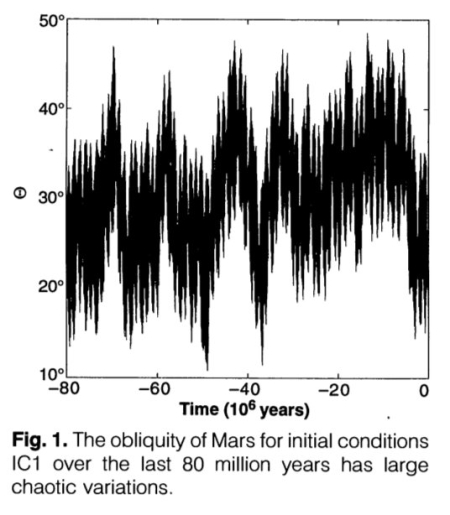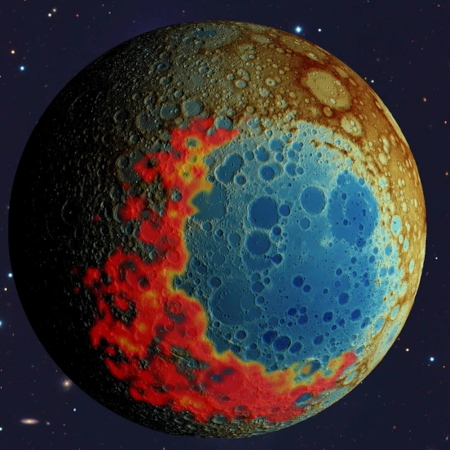Abstract art produced by nature within Mars’ north pole ice cap
Cool image time! The picture to the right, cropped, reduced, sharpened, and annotated to post here, was taken on October 27, 2025 by the high resolution camera on Mars Reconnaissance Orbiter (MRO). I have also rotate the image so that north is to the top.
The science team labels this “Exposure of North Polar Layered Deposits,” an apt description of the horizontal red and grey and blue layers that dominate the image and make this geology look more like an abstract painting than a natural landscape. What we are actually looking at is a canyon 800-to-1,200 feet deep within the north polar ice cap of Mars.
The picture was taken in the summer with the Sun about 12 degrees above the horizon to the south. Thus, the northern cliff face is illuminated, revealing its many colored layers, while the south face is mostly in shadow, hiding those layers.
» Read more
Cool image time! The picture to the right, cropped, reduced, sharpened, and annotated to post here, was taken on October 27, 2025 by the high resolution camera on Mars Reconnaissance Orbiter (MRO). I have also rotate the image so that north is to the top.
The science team labels this “Exposure of North Polar Layered Deposits,” an apt description of the horizontal red and grey and blue layers that dominate the image and make this geology look more like an abstract painting than a natural landscape. What we are actually looking at is a canyon 800-to-1,200 feet deep within the north polar ice cap of Mars.
The picture was taken in the summer with the Sun about 12 degrees above the horizon to the south. Thus, the northern cliff face is illuminated, revealing its many colored layers, while the south face is mostly in shadow, hiding those layers.
» Read more

